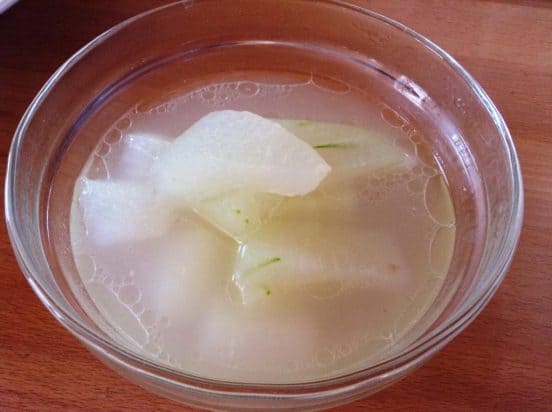It’s always fascinating to me when traditions as different as what grandmother here in Europe would have told and what age-old Chinese cooking suggests suddenly come into total concurrence.
All the more interesting when it is with an issue that is one of those new trends…
Case in point: the hullabaloo about bone broth.

From the New York Times to the Guardian, a few quality newspapers have by now reported on this latest New York food fashion. Broths are being boiled out of bones and sold at roadside counters as if they were cappuccinos or energy drinks.
At a time when veganism seems on the rise and even paleo adherents who want their protein often seem not to want to know too well where the meat they eat came from, it seems a very strange trend. It is hard to imagine even the latter hacking away on bones and having them simmer for hours in their kitchen.
On the other hand, bone broth fits very nicely into the drive towards natural and traditional diets of real food with as much of the nutritional ‘good stuff’ as possible. And hey, talking of tradition, chances are there are enough people who have seen their grandmothers in the kitchen, making a stock from beef or chicken bones.
Further details reveal further fascinating connections.

For one, it is a lesson in the difference between flavors.
We are so used to it, we may consider the taste of ready-made soups from powdered ‘stock’ more normal. Even so, even if it takes some time to get used to the natural aroma of a bone broth again, the difference in taste is very noticeable – and after just a little time, the artificiality of the taste of other ‘stock’, no matter how much they claim to have been made without any “artificial flavor enhancers”, is easy to recognize.
Bone broth fits only too well with discussions about wasteful handling of food.
The same bones that can be used perfectly for soup stock are the ones most likely to be discarded by the butcher’s because no one wants them. They end up in bone meal or other “treatment” of cadavers that the butcher will, in fact, have to pay for… and similarly, a whole broiler chicken is a problem nowadays because it produces so much “waste”…
But then, thinking of bones may be thinking of danger.
BSE is not such an issue anymore, but fear of it had been going around just a few years ago. Still, animal bones may be considered potentially dangerous; they could contain prions or other disease-causing agents, and thus an industrially-made bone broth may not feel like the best of ideas.
At the very least, if hours-long cooking of bones for broth releases much of what accumulated in them, good and bad, it is essential that one looks for good quality. An animal that had been full of antibiotics to let it get marketably big in the least amount of time and not die from the conditions it’s being kept in probably doesn’t make for a good choice; organic and free-range, pastured, etc. does.
In light of intercultural/-national themes in cooking, pork, finally, makes for a particularly interesting example.
Beef or chicken stock feel familiar to a ‘Westerner’, but the very idea of “pork broth” somehow sounds strange. The only problem with this perception: Another already longer-running trend food has been ramen, and one of the most common and popular kinds of that is tonkotsu ramen. And what is tonkotsu? Nothing but a stock based (mainly) on pig bones, the making of which is considered quite an art in Japan and made into quite the science by some enthusiasts.




Leave a Reply
You must be logged in to post a comment.